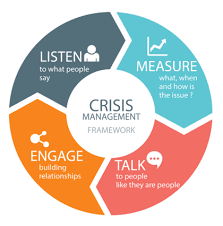The purpose of this study is to provide a comprehensive systematic literature review (SLR) of factors influencing crisis management (CM). The study attempts to assess the main areas that have been linked to and studied CM, and the research outlets that have been provided these research.
 The study adopts a qualitative approach and uses SLR method to collect relevant data. The study surveyed 223 studies from different research outlets, including the most reputed publishers; Emerald, Wiley, Elsevier, Springer, Taylor & Francis, SAGE, and Inderscience. The extracted articles are categorized into 8 areas based on their effect on CM. The most important factors are communication and social media, which have 66 studies with 4039 citations, leadership which have 40 studies with 2315 citations, followed by knowledge, governance, information technology, strategic planning, and professional entities, which have 38, 24, 23, 16, and 16 manuscripts with 2109, 1738, 301, 548, and 160 citations, respectively.
The study adopts a qualitative approach and uses SLR method to collect relevant data. The study surveyed 223 studies from different research outlets, including the most reputed publishers; Emerald, Wiley, Elsevier, Springer, Taylor & Francis, SAGE, and Inderscience. The extracted articles are categorized into 8 areas based on their effect on CM. The most important factors are communication and social media, which have 66 studies with 4039 citations, leadership which have 40 studies with 2315 citations, followed by knowledge, governance, information technology, strategic planning, and professional entities, which have 38, 24, 23, 16, and 16 manuscripts with 2109, 1738, 301, 548, and 160 citations, respectively.
The current study provides an open insight for academicians and researchers on the main areas of CM investigated by prior studies. It provides a novel contribution and comprehensive understating through highlighting what has been done and what is left to be done in respect to crisis management.
Factors influencing crisis management: A systematic review and synthesis for future research, 2021
Cogent Business and Management
Yahya Maresh H. Hazaa , Faozi A. Almaqtari & Abdullah Al-Swidi
https://doi.org/10.1080/23311975.2021.1878979
https://www.tandfonline.com/doi/pdf/10.1080/23311975.2021.1878979



